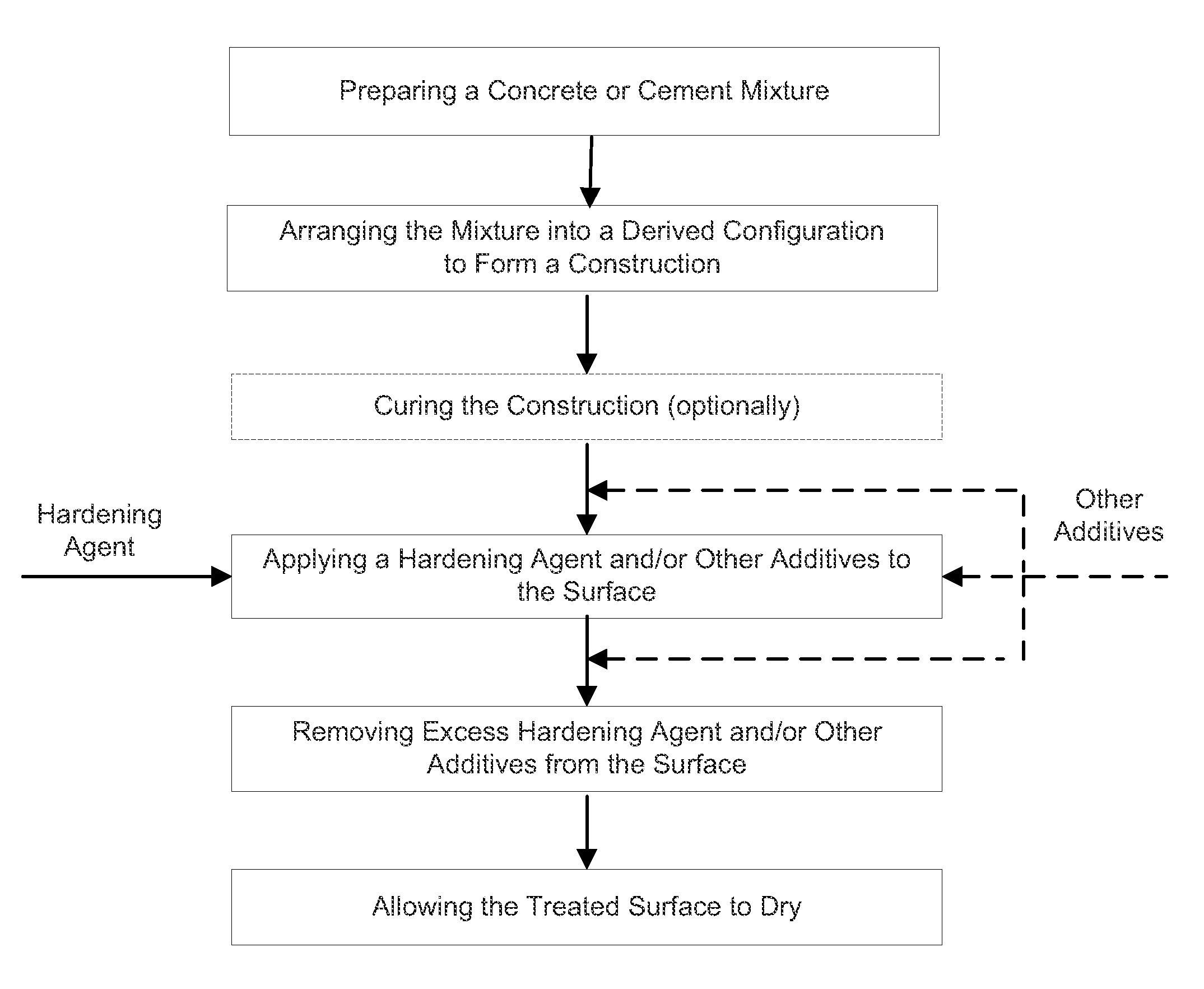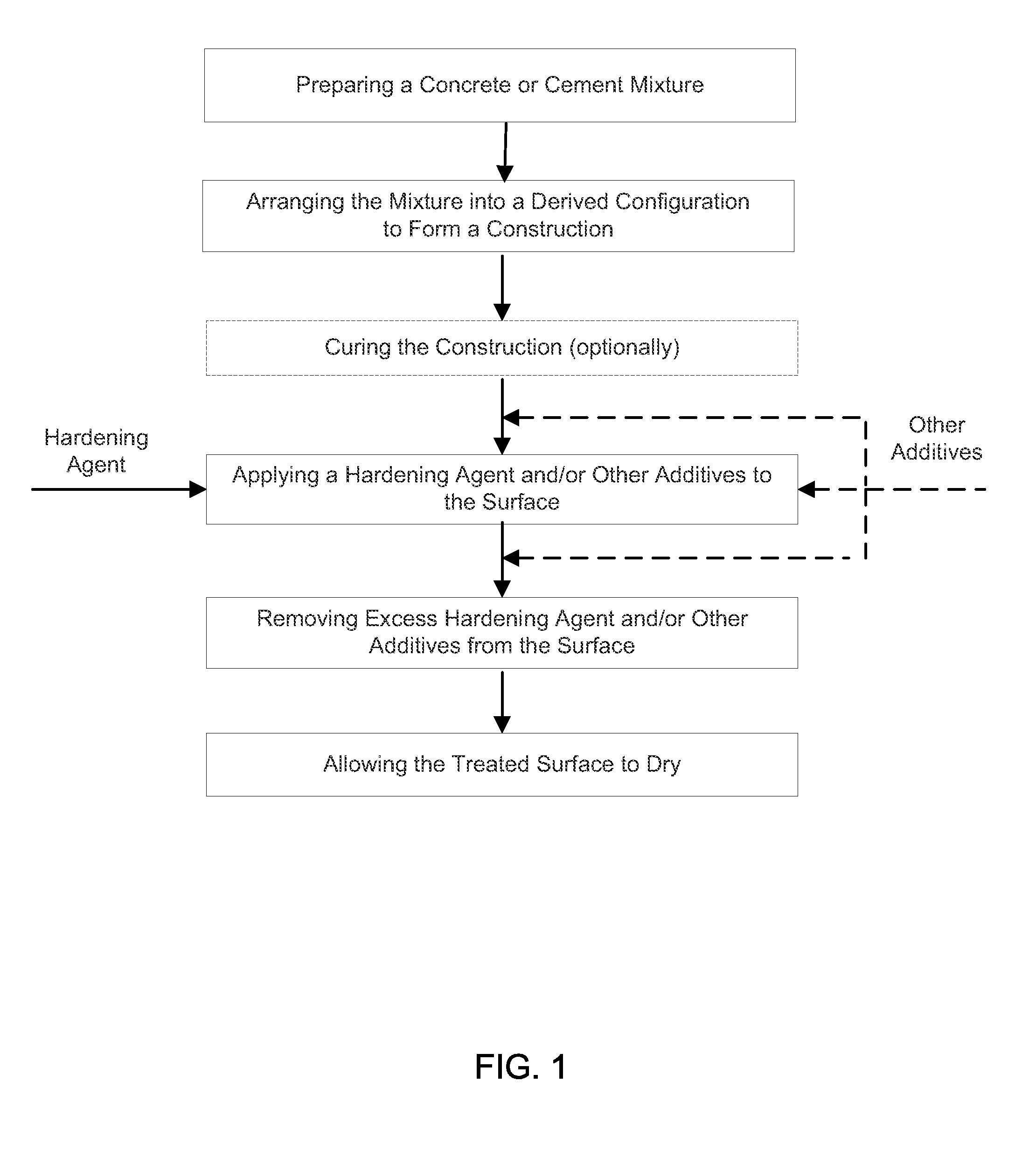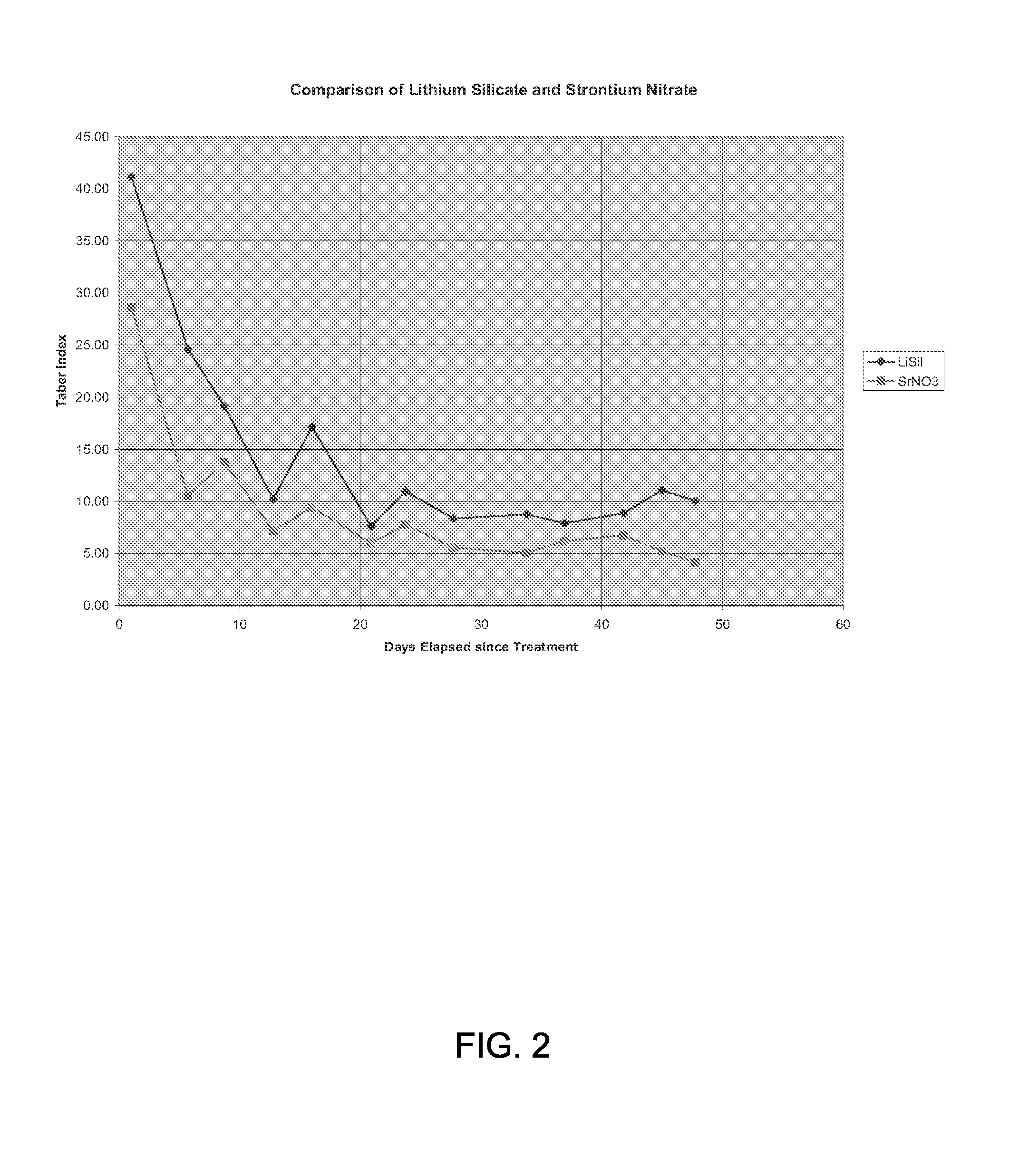Strontium based solutions and processes for surface hardening of concrete and other cementeous materials and structures made thereby
a technology of cementeous materials and solutions, applied in the direction of liquid surface applicators, special surfaces, coatings, etc., can solve the problems of many drawbacks, negative side effects, and inability to harden and seal concrete surfaces, and achieve the effects of less caustic and hazardous, less costly, and easy application
- Summary
- Abstract
- Description
- Claims
- Application Information
AI Technical Summary
Benefits of technology
Problems solved by technology
Method used
Image
Examples
example 1
[0028]Cement tiles were prepared using Quikrete® sand mix and tap water at 6 parts concrete to 1 part water by weight. Quikrete® Sand / Topping Mix Number 1103 was chosen because it does not contain an admixture, which could affect the strengthening of the concrete or aggregate and distort hardness testing results.
[0029]The sand mix and water were added to a mixing bowl, mixed with a Hobart N50 Tabletop mixer for two minutes on the lowest setting, allowed to rest for two minutes, and then mixed again for another minute. After the mixer was removed, the mixing bowl contents were vibrated for 5 minutes using a sander in order to remove any entrapped air.
[0030]The cement was then placed into a wooden mold, with an interior dimension of 12 inches×12 inches×⅜ inches, and the wooden mold was placed on Plexiglas®. The cement was then screeded using a trowel until the surface was flat and smooth from one side to the other. After approximately thirty minutes the cement was scored into nine 4 i...
PUM
| Property | Measurement | Unit |
|---|---|---|
| hardness | aaaaa | aaaaa |
| stain resistance | aaaaa | aaaaa |
| alkali silica reactivity | aaaaa | aaaaa |
Abstract
Description
Claims
Application Information
 Login to View More
Login to View More - R&D
- Intellectual Property
- Life Sciences
- Materials
- Tech Scout
- Unparalleled Data Quality
- Higher Quality Content
- 60% Fewer Hallucinations
Browse by: Latest US Patents, China's latest patents, Technical Efficacy Thesaurus, Application Domain, Technology Topic, Popular Technical Reports.
© 2025 PatSnap. All rights reserved.Legal|Privacy policy|Modern Slavery Act Transparency Statement|Sitemap|About US| Contact US: help@patsnap.com



